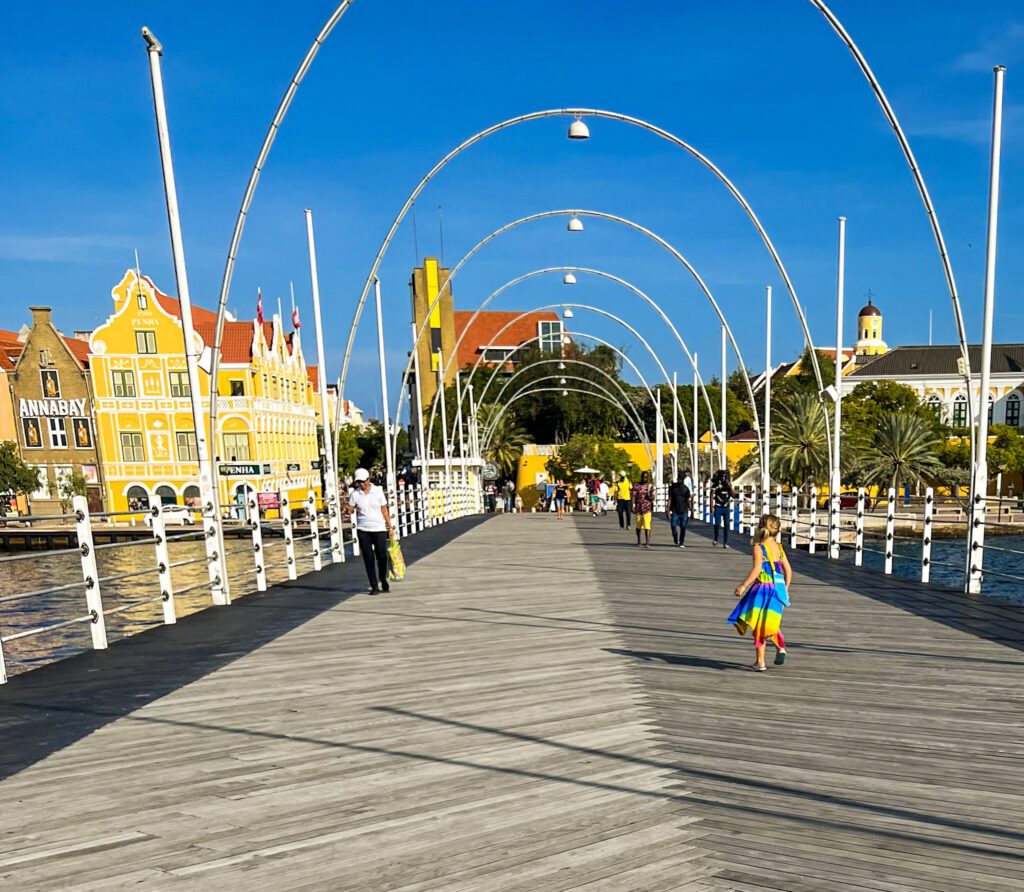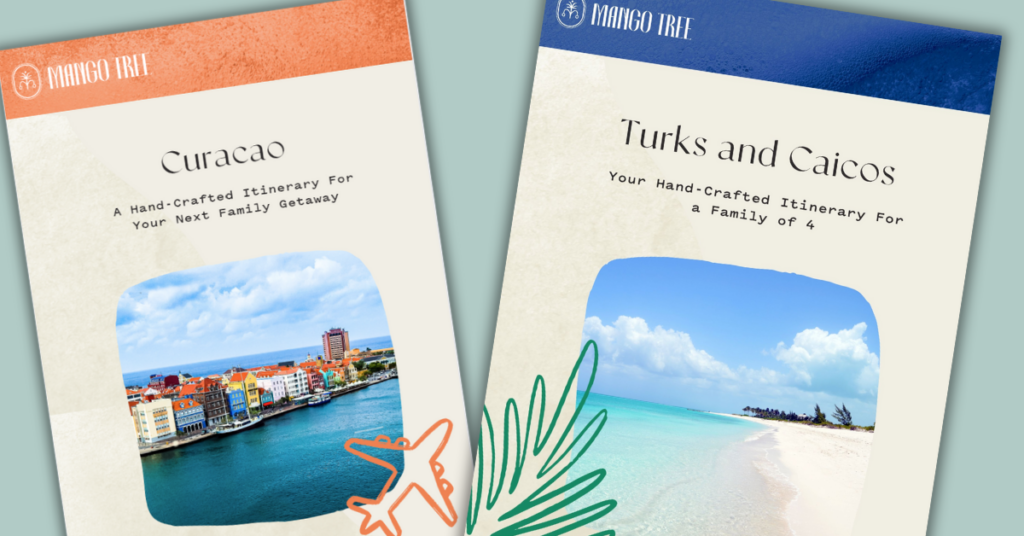Table of Contents
You’re not alone! We’ve got the inside scoop, and trust me, you’ll want to keep reading.
Curacao island has long been overlooked as a mainstream Caribbean travel destination. But people are catching on, and we understand why.
After our own family trip to Curacao – and having planned several for Mango Tree clients – we can confidently say: It delivers.
Travelers flock to neighboring Aruba for its infamous white sandy beaches and resorts. More than once, after returning from a recent scouting trip to Curacao with our own kids, we were asked,
“Where is Curacao?” Is Curacao its own country? Why go there? What does it have to offer me and my family?
So so much. If you want a Caribbean family vacation with a European vibe, somewhere that’s still a little off the beaten path, then definitely consider Curacao.
Here’s a preview: Pristine beaches tucked into small coves. Accessible beach snorkeling.
A colorful capital city offering a wide range of culinary treats.
Myriad hotel options, ranging from some of the most affordable beachfront resorts in the Caribbean to ultimate boutique luxury.
Curacao may be just the vacation destination you’ve been hunting for.
Keep reading for our best tips to have a fantastic Curacao visit!
Where is Curacao located?
Curacao is an island located in the southern-most part of the Caribbean Sea, in a cluster with Aruba and Bonaire.
The easiest thing to do is find Venezuela, South America on a map and look just above its coastline. There you will find the ABC Islands, with Curacao right in the middle.
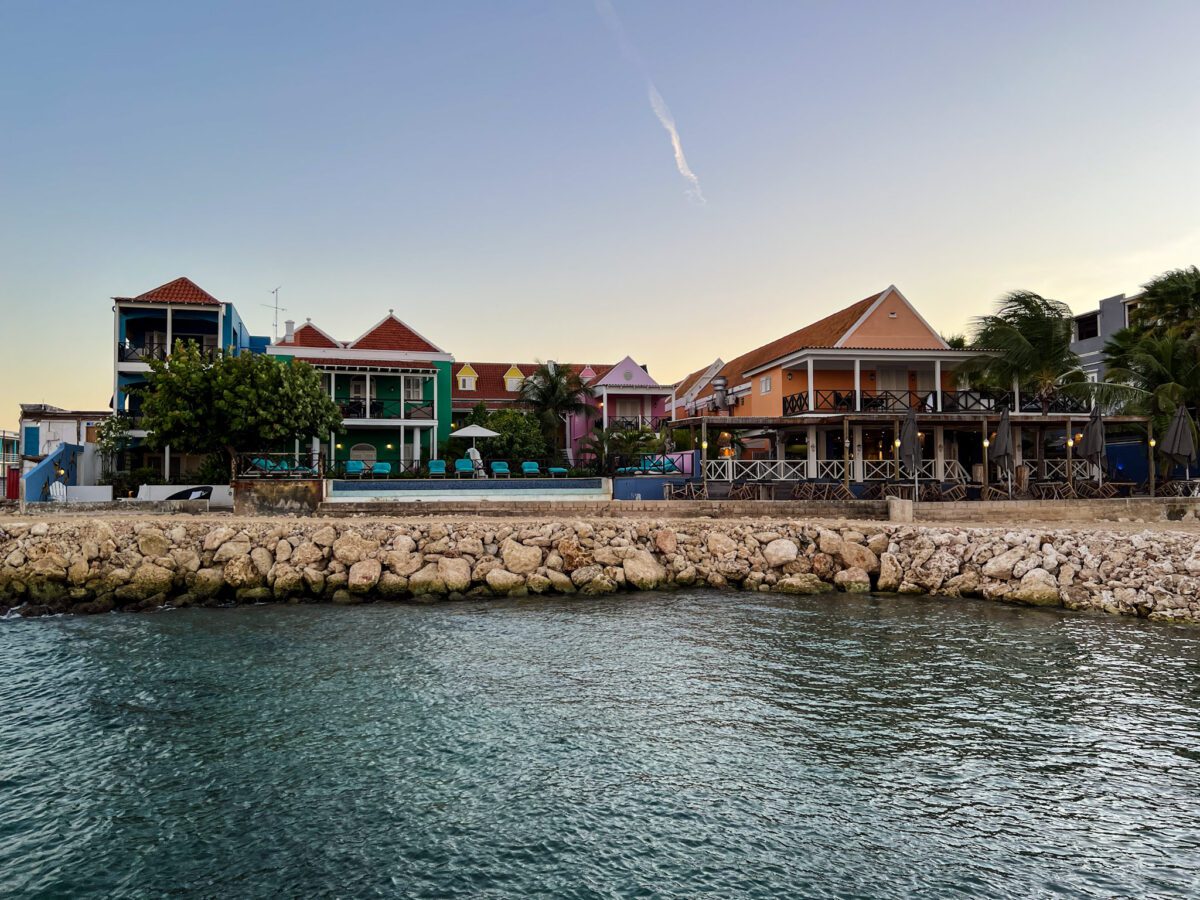
This post contains affiliate links from our trusted partners
The Dutch Caribbean: A Brief Overview
To understand Curacao, and how it fits into the overall Caribbean story, start with the basics: Curacao is part of the Dutch Caribbean, a group of six Caribbean islands that are part of the Kingdom of the Netherlands. They are:
- Aruba
- Bonaire
- Curacao
- Saba
- Sint Eustatius
- Sint Maarten
The colonization of these islands, led by the Dutch West India Company, left them with a unique European flavor in terms of language and food. Yet they still retain a deliciously laidback, beachy vibe that defines a Caribbean getaway.
You can further divide these Dutch Caribbean islands into two groups.
St. Maarten, Saba, and St. Eustatius are neighbors in the northeastern Caribbean Sea, not far from the Virgin Islands.
Down south, the ABC Islands — Aruba, Bonaire and Curacao – form another group in the Lesser Antilles.
Where is Curacao Island?
Curacao — best pronounced Cure-ah-Sow or Kur-ah-Sow — sits about 40 miles north of the Venezuala cost, right between Aruba and Bonaire.
Curacao is in many ways the hub of the trio. Due to the central location of Curacao, Aruba and Bonaire can each be reached by a 20-minute flight on Divi Divi Air. Visitors from Aruba seeking to get to Bonaire, and vice versa, on the other hand, must connect through Curacao.

Curacao Is Awesome. Here’s Why You Should Visit.
Because of its location, Curacao is often compared to its sister islands of Aruba and Bonaire. Yet in many ways, the three could not be more different. Each of the ABC islands has something unique to offer your family on vacation.
Curacao island is the largest and most populated of the three islands, with 160,000 residents. Aruba has a comparable population size, but the two islands receive entirely different flocks of tourists. Curacao has a much heavier European influence than Aruba, which sees more American visitors.
Bonaire – known less for its beaches than its underwater world – is much smaller than the other two, and relatively undeveloped.
Interestingly, Curacao also has a strong Afro-Caribbean heritage, and a large Curaçaon population (rather than Dutch immigrants). This all contributes to Curacao’s dynamic blend of beach fun and cultural experiences. It may be a Dutch island but you’ll hear several Caribbean languages on Curacao’s shores, including Spanish.
Here are a few things that make Curacao a special place to visit.
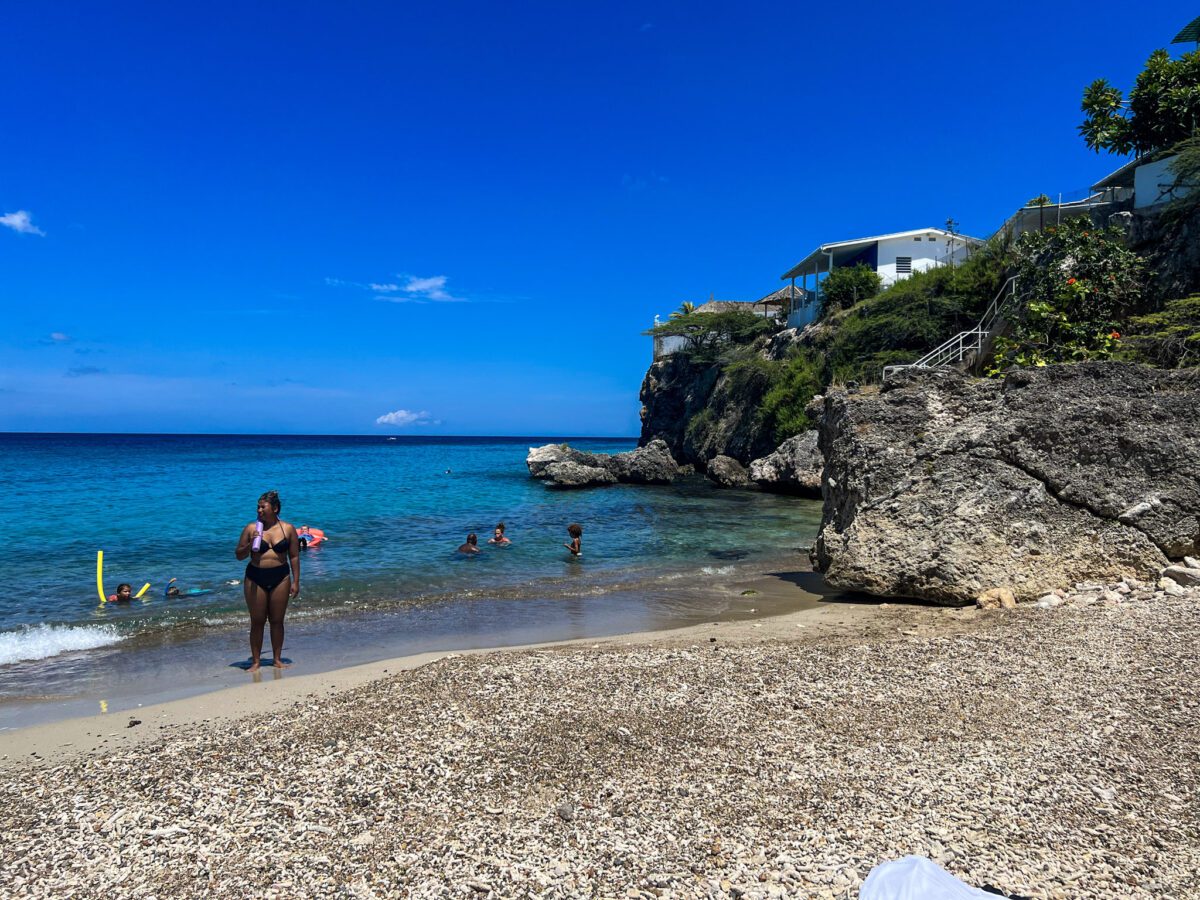
World-Class Snorkeling and Diving
If your kids are ready to snorkel, Curacao should be on your list.
Curacao is brimming with rocky coves, small bays, and thriving coral reefs for snorkeling and diving. While you may not find endless stretches of untouched white sandy beaches in Curacao, the small beaches offer unparalleled access to underwater adventure.
Older kids who are strong swimmers and more seasoned snorkelers will love the famous Tugboat Wreck. The wreck is only 5 meters down, in shallow clear water, making it a magical spot for kids who can snorkel but not yet scuba dive.
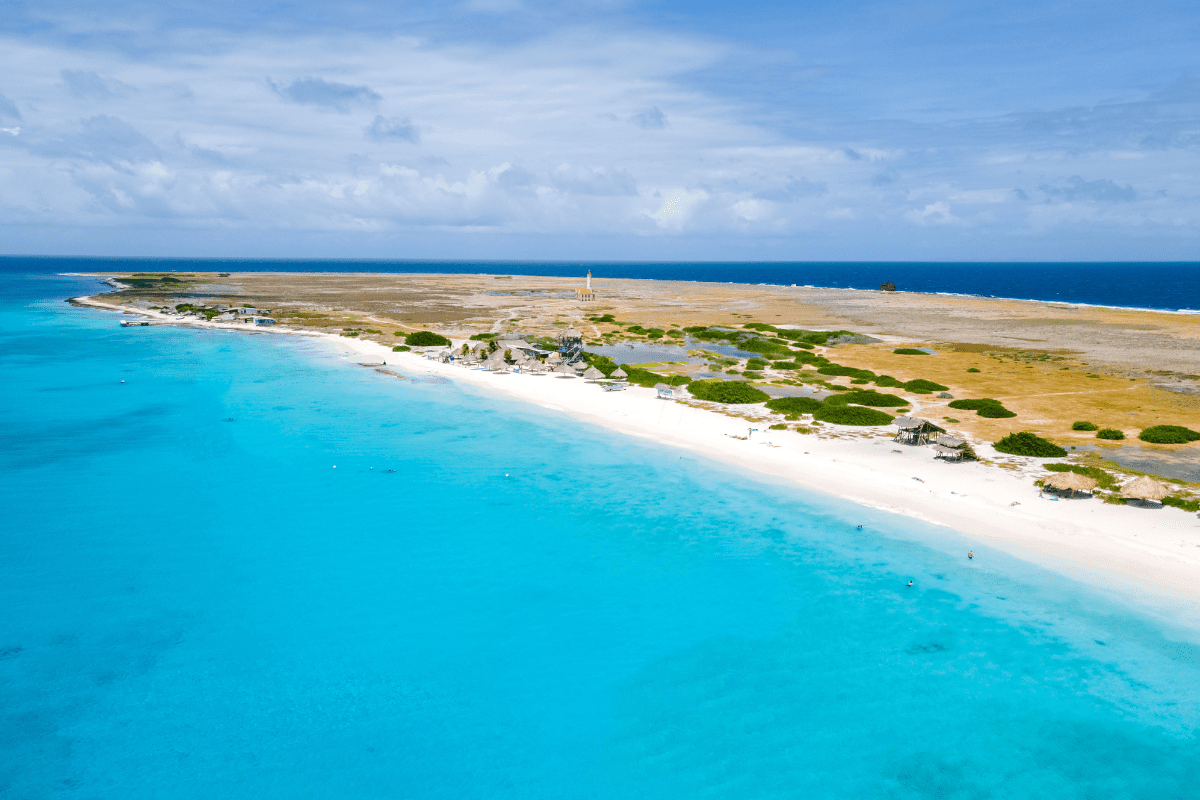
A deserted island adventure
If I’ve learned one thing in my extensive Caribbean travels, it’s that the feeling of being shipwrecked in paradise – truly away from it all – can really help you feel grounded.
That’s exactly how you’ll feel after a trip to Klein Curacao tour. This full day boat trip is an adventure that takes you to one of the best beaches in the Caribbean Sea.
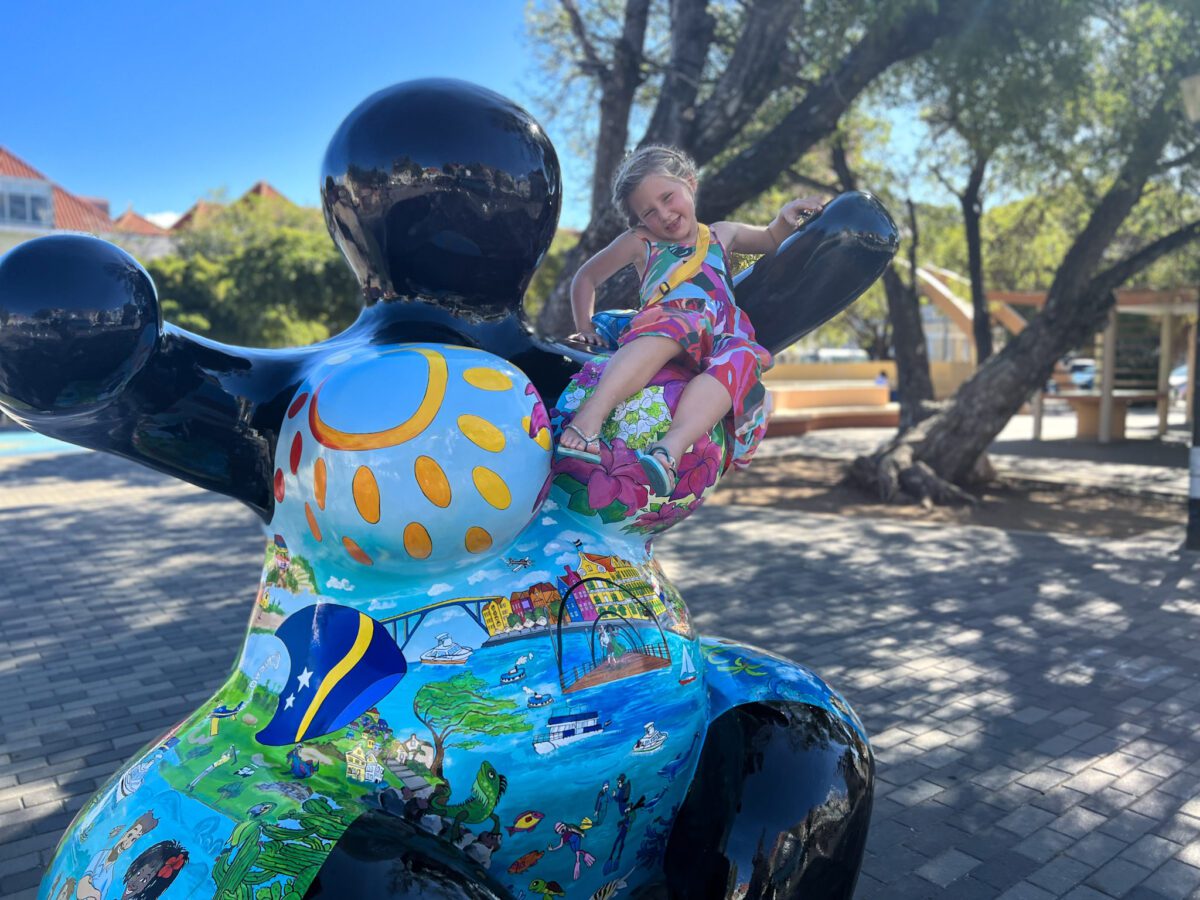
One of the Most Colorful Caribbean Islands
Exploring a colorful Caribbean town should be on every family’s bucket list.
Curacao is like a prism that reflects back all the colors of the Caribbean. Not only is the ocean water a vivid turquoise, but the capital city of Willemstad is awash in pastel homes and buildings.
You can have a family photoshoot at Queen Emma Bridge, with the iconic yellow, blue, and pink Punda buildings in the background. It looks like it was picked up and dropped on the island straight from the Netherlands.
And don’t miss architectural gems like beautifully restored “Wedding Cake House,” so-called for its ornate front porch, and the city’s vibrant street art.
One of our favorite Caribbean travel bloggers, The Traveling Island Girl, has a whole Curacao mural chasing series about the street art to be seen around town. Your camera will be full by the time you’re done wandering Willemstad’s colorful streets.
Mango Tree Travel Tip:
Curacao is hot. You’re still in the Caribbean after all.
If you’re headed there with kids who might not be able to manage hours of walking around town in the tropical heat, consider a 1-hour Tuk Tuk tour of the colorful capital.
The kids will love the ride, and you’ll be able to see the sights without dragging them around.
Captivating Dutch-Afro-Caribbean Culture
Curacao combines relaxing beach vibes with a captivating blend of European and Afro-Caribbean influences.
The Dutch culture is apparent; if you’ve ever been to Amsterdam, you’ll feel a light sense of familiarity as you walk around the small, cobblestone streets of Willemstad. The Netherlands Antillean guilder remains the currency of Curacao, a reminder of the island’s Dutch history.
You can find both European and Afro-Caribbean influence in the architecture and historic sites of Punda, Willemstad’s oldest district. For a deeper dive into the island’s history, head to the Savonet Museum, the Kura Hulanda Museum, or on a tour of historic Fort Amsterdam.
Prefer to explore new cultures via culinary adventure? In downtown Willemstad, sample Curaçaon specialties like fish soup or stoba di kabritu (goat meat) at the Plasa Bieu rustic market.
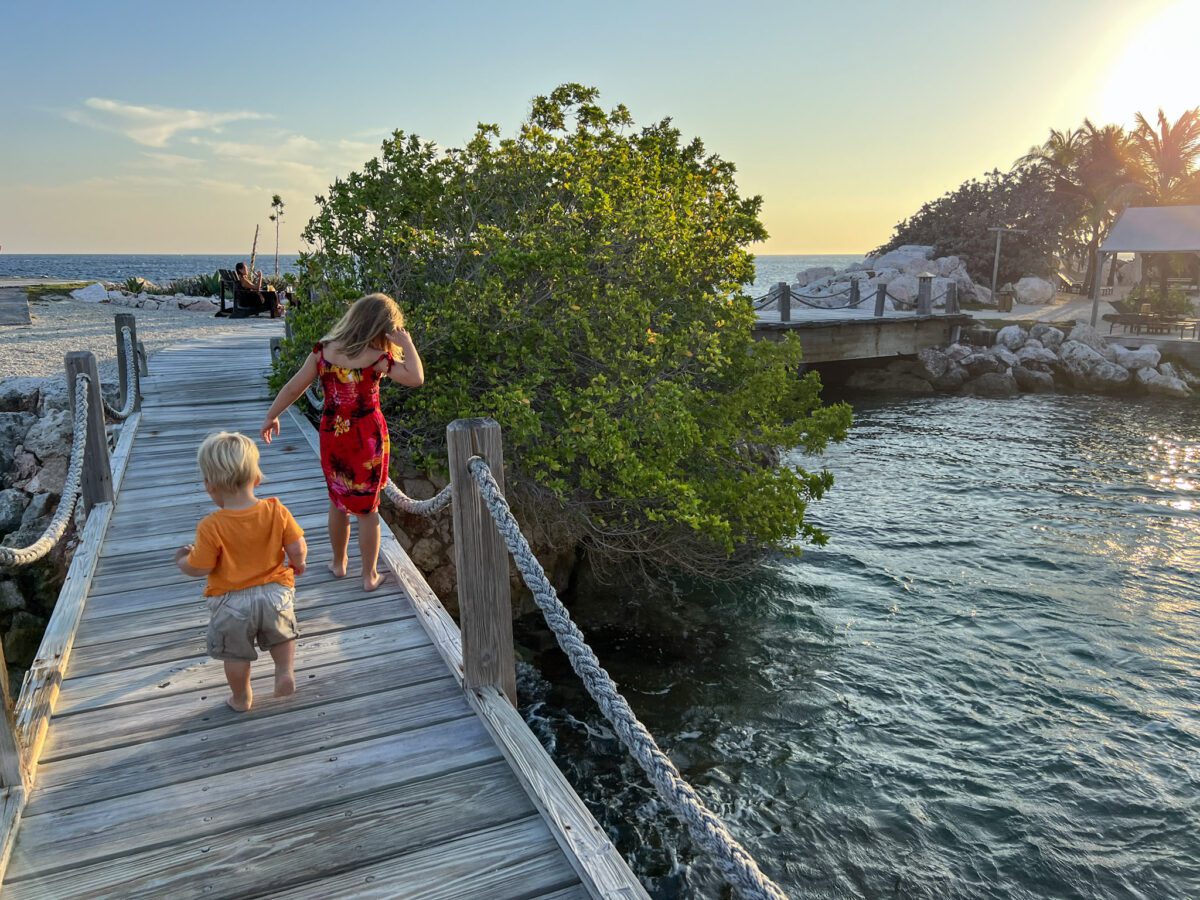
Family-Friendly Activities
Curacao is a great place to visit for families who don’t want to spend their entire vacation swimming or lounging on the beach. People may wonder where Curacao is located, but it isn’t a remote, undeveloped island where beaches are the only attraction. Nor is it a massive resort destination where you never leave the hotel grounds. It’s best for exploration.
There is a small Children’s Museum that offers hands-on exhibits, a donkey sanctuary, and a Sea Aquarium, which is one of the Caribbean’s largest and offers a host of daily animal interactions that kids will enjoy.
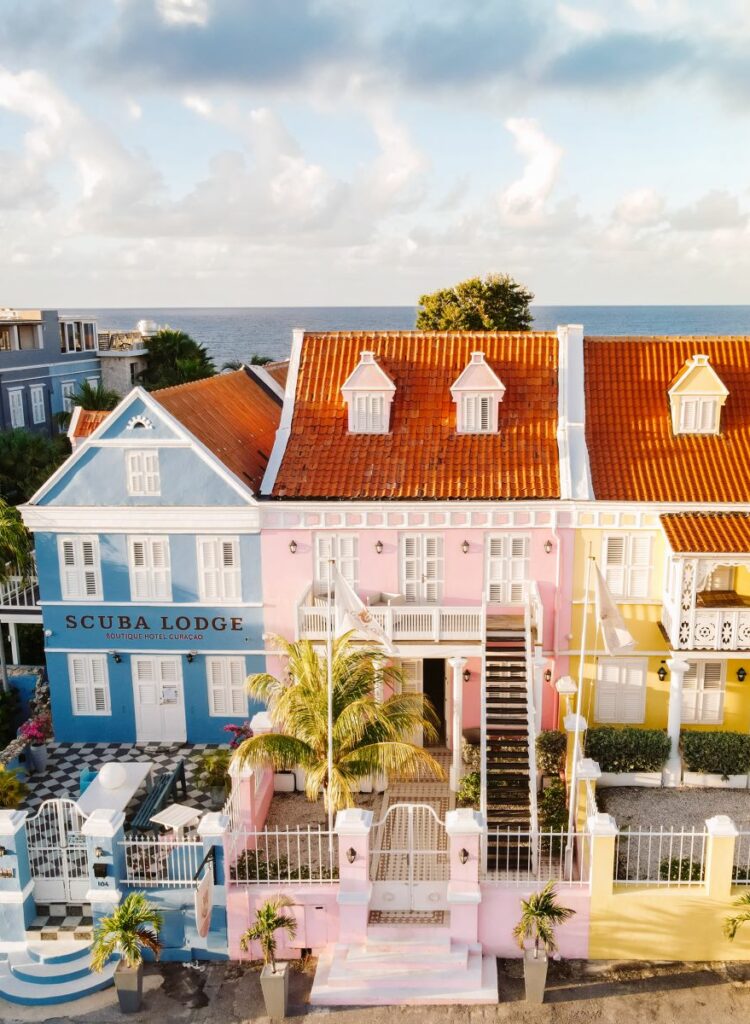
Awesome Boutique Hotels
Curacao’s roster of family-friendly boutique hotels is deep.
There are so many cool small and independently owned hotels to choose from, offering a nice change of pace from the more typical large Caribbean resort. But if you prefer more of a resort over hotel vibe, you can find that here too.
For an in-town experience, Scuba Lodge is walking distance from several cafes and fine dining, but also offers Caribbean Sea views, an infinity pool for kids, affordable two bedroom units, and a playground at the on-site restaurant.
For a more traditional beach hotel, Avila Beach Hotel is an excellent choice for families, with spacious rooms, snorkeling right from a private beach, and a good location for exploring Willemstad.
And finally, for ultimate boutique luxury, Baoase Luxury Resort is one of the finest in the region. The gently sloping beach at this hotel, with plush lounge chairs and attentive service, is truly a sanctuary.
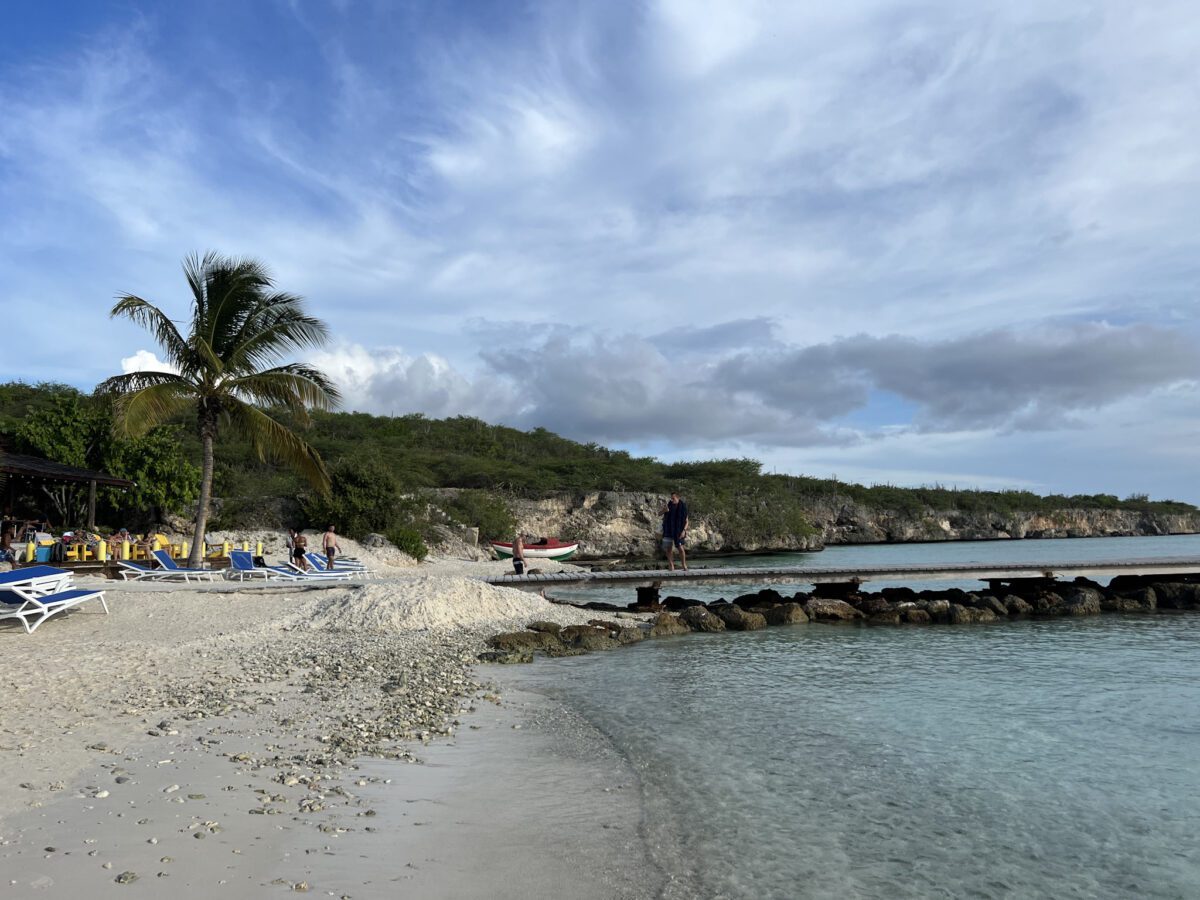
Natural Attractions Beyond The Beach
Many Caribbean islands have a flat, gentle topography. But Curacao is home to varied landscapes. There’s everything from rugged cliff faces to rocky beaches to small, private bays. This makes Curacao a great destination for travelers who want to explore beyond the beach.
For a blood-pumping 1.7-mile hike, you can drive to the island’s eastern end and visit the verdant Christoffel National Park, home to Christoffel Mountain, the highest point in the ABC Islands. While you’re on that side of the island, stop for lunch at , and snorkel with turtles.
Mango Tree Travel Tip:
If you don’t want to rent your own car to explore Curacao’s interior, opt for a Jeep tour of the national park instead.
Welcoming, Laidback People
What many people adore about Curacao is its palably open-armed, welcoming personality. Laidback Curaçaons like to share their country motto with visitors: “biba i laga biba”, a Papiamento phrase that means “live and let live.”
This free-spirited attitude is likely why Curacao is also LGBTQ+ friendly place, and welcoming to all types of families, couples, and ages.

Frequently Asked Questions
How Do you Get Around Curacao Island?
We highly recommend renting a car while in Curacao so that you can explore all the beaches and activities the island has to offer. That said, while renting a car is easy, driving can be a bit intimidating for the uninitiated near Willemstad, where you should expect mazes of one-way streets.
Beyond Willemstad, things get much easier. Give yourself a little time to get used to driving but rest assured, it’s totally worth it to have your own transportation.
Check Curacao rental car prices on discover cars now:
When Should You Go to Curacao?
Curacao has great weather all year round! Like most Caribbean islands, Curacao’s high season runs from December to April. But there’s never a bad time to go. Curacao sits outside the hurricane belt, which makes it a great destination for off-season months like October or August. That said, the wind in Curacao tends to decrease during hurricane season, and the island will feel hotter and more humid from June to November.
Does Curacao get Hurricanes?
Curacao and the other ABC Islands lie outside the “hurricane belt,” the path most storms follow during hurricane season. That means Curacao is less likely than many other islands to get hit by a hurricane.
What is the Curacao Population?
Curacao has a population of approximately 160,000 people.
What is Curacao? Is Curacao a country?
Curacao is an island in the southern Caribbean. Curacao is an autonomous country but part of the Kingdom of the Netherlands.
What Country does Curacao belong to?
Curacao is a constituent country of the Kingdom of the Netherlands. Four countries – the Netherlands, Aruba, Curacao, and St. Maarten – make up the Kingdom of the Netherlands.
Get Caribbean Family Travel Tips Right Into Your Inbox
Don’t miss our other Caribbean destination guides for families!
And for even more Caribbean and family travel inspiration, sign up for our newsletter! We feature a new destinations, highlight our favorite hotels, and share family travel tips. Keep the travel dreaming coming all year long.

